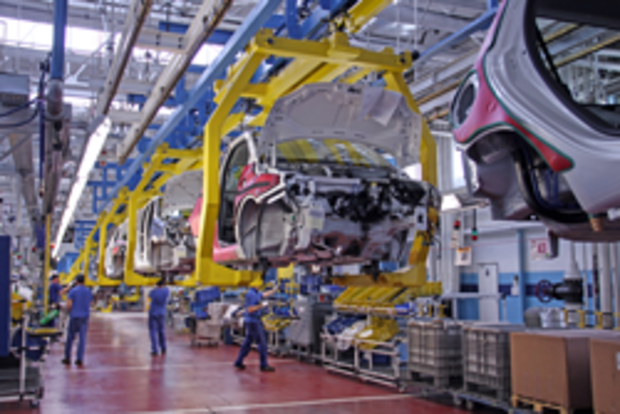Case Study | Car Manufacturer Uses Sparkling Vehicle Logistics

Car Tracking and Distribution
Challenge
A car manufacturer was interested in introducing early transparency and control of in-plant transport and loading of vehicles based on RFID technology in the vehicle logistics. Even if the number of potentially occurring errors is rather small, the follow-up costs can be very high, making an early detection an absolute necessity. Furthermore, the car manufacturer promotes the use of this technology in the complete logistics supply chain.
Background
Whether it is in-plant logistics, production or a loading process – the car manufacturer uses RFID in almost all handling processes on site. The goal of the various RFID applications is to receive information about the movement of vehicles inreal time in order to use spaces and resources in a more efficient way.
Solution
The vehicle manufacturer uses the RFID technology for a finished vehicle – from the moment it goes from the production to the logistics and leaves the plant. When the vehicles are accepted by the in-plant logistics, they receive a shipment label which contains an RFID chip. From this moment on, each movement of the vehicle on site is controlled and documented when it passes RFID read points. Furthermore, the vehicles are identified when they are loaded onto trains and car transporters as well as when they leave the plant. This is the basic information used in the complete logistics supply chain. The necessary information about the vehicles and changes in their status can be retreived in the system at any time.
Result
The primary goals of introducing the RFID technology was to increase transparancy and improve the process execution on company’s site. The new AutoID system has reduced the distance and time when handling the vehicle over from the production to the vehicle logistics up to the parking space in the shipping area, resulting in a significant improvement of the movement processing. Furthermore, the RFID technology considerably improves the vehicle traceability. This way, for example, it is possible to detect potential loading errors early or even to prevent them. Last but not least, the time and effort used for manual data entry and searching for vehicles is significantly reduced.
Download as PDF
Case Study (September 2017 | de)